ISSUE NO. 5: REGIONAL ENVIRONMENTAL, SOCIAL AND GOVERNANCE (ESG) TRENDS AFFECTING FRONTIER MARKET INVESTMENTS
While concerns over cultural conflicts, environmental liabilities, corruption, and weak governance dissuade many investors, recent economic and demographic trends in some frontier markets are providing unmatched and often untapped opportunities for growth – both presently and for the foreseeable future. Learning how to better understand and manage the environmental, social and governance (ESG) risks of working in these countries may create important new pathways for finding and capitalizing on previously unappreciated, higher yield investments.
Consider Sub-Saharan Africa – a region that has traditionally received little attention from private investors and asset managers, South Africa excepted. The countries of Sub-Saharan Africa are known for crushing poverty, armed conflicts creating security and human rights concerns, cultural norms that support corruption and thwart transparency, existing production practices that cause environmental damages, create unsafe worker conditions and allow human rights abuses in the labor and supply pools. These challenges, combined with weak inconsistent and unpredictable governance from closely held national power bases, understandably create barriers for foreign investment.
With Africa accounting for half of world’s projected growth through 2030, an exceptionally young population and above-average economic growth, the emerging economies of the continent are becoming more difficult to ignore for investors looking for new opportunities and high multiples.
Four Rising Stars
According to the International Monetary Fund (IMF), Sub-Saharan Africa is home to six of the world’s ten fastest growing economies over the past decade. Growth has been particularly robust in a number of the region’s countries that are least dependent on extractive resources.
Cote d’Ivoire (CIV), Kenya (KEN) and Ethiopia (ETH) have seen their economies grow at 5% or more annually since 2010, and, together with Senegal (SEN), each is projected to grow at 6-8% in the coming years compared with an average global growth rate of just under 3% in 2017. And Cote d’Ivoire and Senegal have among the lowest inflation rates in the world – below the rate in the US.


Region-wide, foreign direct investment is increasing, yet private investment in these fast-growing, non-resource-intensive countries remains a small percentage of their economies. Why?
ESG Risks Deterring Investors
Financial journalist Antonio Oprita explains that “Frontier markets are a big gamble, as they often are plagued by political and social crisis and their markets are not as liquid as those of more established emerging markets.” Investors are also clearly wary of the corruption in these countries, which not only stifles sustainable economic growth but can implicate even well-intentioned ventures in reputation-breaking interactions and lawsuits for years.
To help expose and reduce corruption, Transparency International maintains a country-by-country rating of a Corruption Perception Index (CP Index). The CP Index reveals a particularly interesting pattern for the fast-growing non-resource-intensive countries of Sub-Saharan Africa – each of the four rising stars, with the exception of Kenya, has seen an improvement in its CP Index ranking relative to the other 172 countries ranked while also delivering better than average GDP growth. Cote d’Ivoire and Senegal have seen a very substantial improvement in the perceived level of corruption in the past five years.


Note: Corruption rank refers to Transparency International’s Corruption Perception Index. A rank of 1 is the least corrupt country.
It’s difficult to demonstrate a causal relationship between enhanced transparency and economic growth1, but the complementary pattern sends a signal to investors who are looking for breakthrough opportunities – frontier markets can yield exceptional opportunities where ESG risks can be managed.
Those investors who have ventured into frontier markets often focus on political risk indexes as an indicator of the soft but critical factors impacting investment success in this region, but societal and governance risks are hard to predict. And automated tools for assessing ESG risk are simply too limited in their ability to calibrate for the ecological, cultural, human rights and related nuances that are becoming so critical to selecting good investments and capturing sustainable growth. The good news is that increasing experience and emerging methods (see examples below) are enabling more reliable understanding of ESG risks in frontier markets, as well as how to manage those risks over time to promote safe, sustainable performance of exceptional investment opportunities.
Higher Returns through Superior Understanding of ESG Risks
ESG risk assessment methods and practices that can yield credible risk profiles to support sustainable investment decisions are beginning to take root and be successfully tested in frontier markets worldwide. Despite this, some investors still rely heavily on automated, data-driven models that provide quick profiles for evaluating ESG risks. Why aren’t these enough? Here are three important reasons:
- Missing the Hidden Gems – Oversimplifying and ESG risks will limit investors’ ability to find and maintain the truly safest of those outlier opportunities that may generate exceptional growth. Investing in remote areas of the Democratic Republic of Congo would score low on most existing ESG screening methods given the reputation for violence, human rights abuses, and corruption. But a qualified, on-the-ground approach to managing these risks in DRC could open tremendous opportunities for investment in mobile telecom 2 and off-grid energy production in this country of 75 million. Trained anthropologists, sociologists and environmental scientists working in integrated teams with in-country observers are using established, rapid assessment techniques to develop a complete and reliable profile of ESG risks that serve as a clear basis for investment decision-making. These include, for example, social or human rights due diligence assessment, stakeholder mapping and community perception surveys.
- Flying Blind – Relying on automated models to characterize ESG risk leaves investors with far too much uncertainty for understanding how these factors may influence the success or failure of an investment. The ability to access networks of trained, on-the-ground teams to provide understanding of the local context is critical. The failure of international brands entering emerging markets is routine, largely for cultural reasons, from Nestle in Africa to Coca Cola in Asia. Even MPESA, a highly successful mobile banking company from East Africa, failed when entering new markets Africa – a reminder that each country has unique social and cultural characteristics.
- Holding on Too Long – Treating these risks as static determinants of an investment decision can lead investors to hold onto assets that are quickly becoming liabilities. BHP Billiton was slow to provide adequate attention and response to the scale of community opposition that would lead to its eviction just 10 years after it bought the Tintaya Mine asset in Peru in 1996. Extractive industries are engaging experts to help them design and apply participatory monitoring programs and impact benefit agreements 3 with host communities that not only maintain clear and honest lenses on evolving social tensions, but help to build trust and on-going social license to operate in even the most difficult cultural environments.
ESG risks can be messy and fraught with uncertainty – enough so that they can easily deter investors from exceptional growth opportunities in frontier markets of Sub-Saharan Africa. While countries like Senegal, Cote d’Ivoire, Kenya and Ethiopia provide outstanding growth opportunities for investors, the ESG risks in these and other frontier markets are more material than in developed economies. But investors that are better prepared to assess and manage ESG risks, understand the local context, and leverage local teams will be better poised to earn exceptional returns, both through risk minimization and identification of value creation opportunities in frontier markets.
_________________________________________________________________________________
1 See an argument by the World Economic Forum for how corruption hinders economic growth at https://www.weforum.org/agenda/2015/05/how-does-corruption-affect-economic-growth
2 A 2013 article estimated that only 25% of the DRC population own cell phones.
3 Ironically, BHP instituted an impact benefit agreement with representatives of local communities near Tintaya – it was just too little, too late.
October 2017
News & Notes

Acorn International
1702 Taylor St, Suite 200B
Houston, TX 77007, USA
1213 Purchase St
New Bedford, MA 02740, USA
